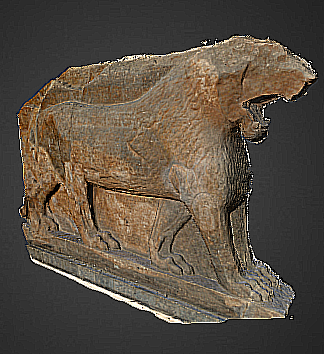If you think philosophically about 3D printing and scanning technology, a lot of it is really about replacing what is lost – whether it’s a lost limb or a destroyed artifact. 3D technology, aside from its practical purposes in manufacturing and industry, is about rescuing and restoring, rebuilding and revitalizing.
Thanks to terrorism and war, not to mention the slow destruction caused by time, a lot of beautiful art and architecture is being lost – but governments, cultural organizations and artists have been harnessing 3D scanning and printing to make sure that nothing is ever lost forever. In the Middle East, it’s been an especially urgent endeavor as ISIS destroys the art and history of countries that have existed for thousands of years, but through a great deal of determination, much of that art and history is being preserved or rebuilt in digital and 3D printed form.
The ongoing success of projects such as Project Mosul is heartening, and seems to be encouraging the further exploration of 3D technology for the restoration of lost monuments. In Iran, a collaboration has been formed for a new project focusing on the 3D scanning and printing of ancient historical sites.
Iran’s Cultural Heritage, Handcrafts and Tourism Organization oversees several museums throughout the country, including the National Museum of Iran. In partnership with the country’s Vice-Presidency for Science and Technology, the National Museum is taking a look at what can be done to turn ruins back into monuments. It’s a big job – when a country has been civilized for tens of thousands of years, there’s going to be a lot of crumbling historical architecture. But if anyone is up to the challenge, it’s these organizations, armed with 3D scanning and 3D printing technology.
One of the main purposes of the Cultural Heritage, Handcrafts and Tourism Organization is the preservation of artifacts. Current technology is making their job much easier, and the Vice-Presidency for Science and Technology, as its name suggests, is responsible for the development and implementation of technology, including 3D printing. Their monument project is still in the very early stages, but the eventual goal is to create 3D printed replicas of Iran’s great historical monuments in their full glory – or even to restore some of those monuments themselves.
There are too many historical ruins in Iran to restore them all, at least right now, so several sites will be selected as the initial focus of the project. The particular sites haven’t been announced yet; the project will be operating in several phases, and right now it’s in phase one: the initial planning stage. The Advanced Manufacturing and Materials Technologies Development Headquarter, a recently established division of the Vice-Presidency for Science and Technology, is putting out a call to any domestic companies that would like to be involved in the project.
The project outlines the steps of the plan as 1) photogrammetry; 2) making a three-dimensional computer model; 3) 3D printing of the piece; and 4) final procession of the piece (if necessary). The scale of the 3D printed replicas will vary, to be determined by the project managers.
Ambitious? Very – but similar projects have been taken on in countries like Greece and the United Arab Emirates, showing that 3D technology is capable of restoration on both small and grand scales. Discuss further over in the Iran’s National Museum & 3D Printing forum at 3DPB.com.
Subscribe to Our Email Newsletter
Stay up-to-date on all the latest news from the 3D printing industry and receive information and offers from third party vendors.
Print Services
Upload your 3D Models and get them printed quickly and efficiently.
You May Also Like
Making Space: Stratasys Global Director of Aerospace & Defense Conrad Smith Discusses the Space Supply Chain Council
Of all the many verticals that have been significant additive manufacturing (AM) adopters, few have been more deeply influenced by the incorporation of AM into their workflows than the space...
EOS in India: AM’s Rising Star
EOS is doubling down on India. With a growing base of aerospace startups, new government policies, and a massive engineering workforce, India is quickly becoming one of the most important...
PostProcess CEO on Why the “Dirty Little Secret” of 3D Printing Can’t Be Ignored Anymore
If you’ve ever peeked behind the scenes of a 3D printing lab, you might have caught a glimpse of the post-processing room; maybe it’s messy, maybe hidden behind a mysterious...
Stratasys & Automation Intelligence Open North American Tooling Center in Flint
Stratasys has opened the North American Stratasys Tooling Center (NASTC) in Flint, Michigan, together with automation integrator and software firm Automation Intelligence. Stratasys wants the new center to help reduce...





































